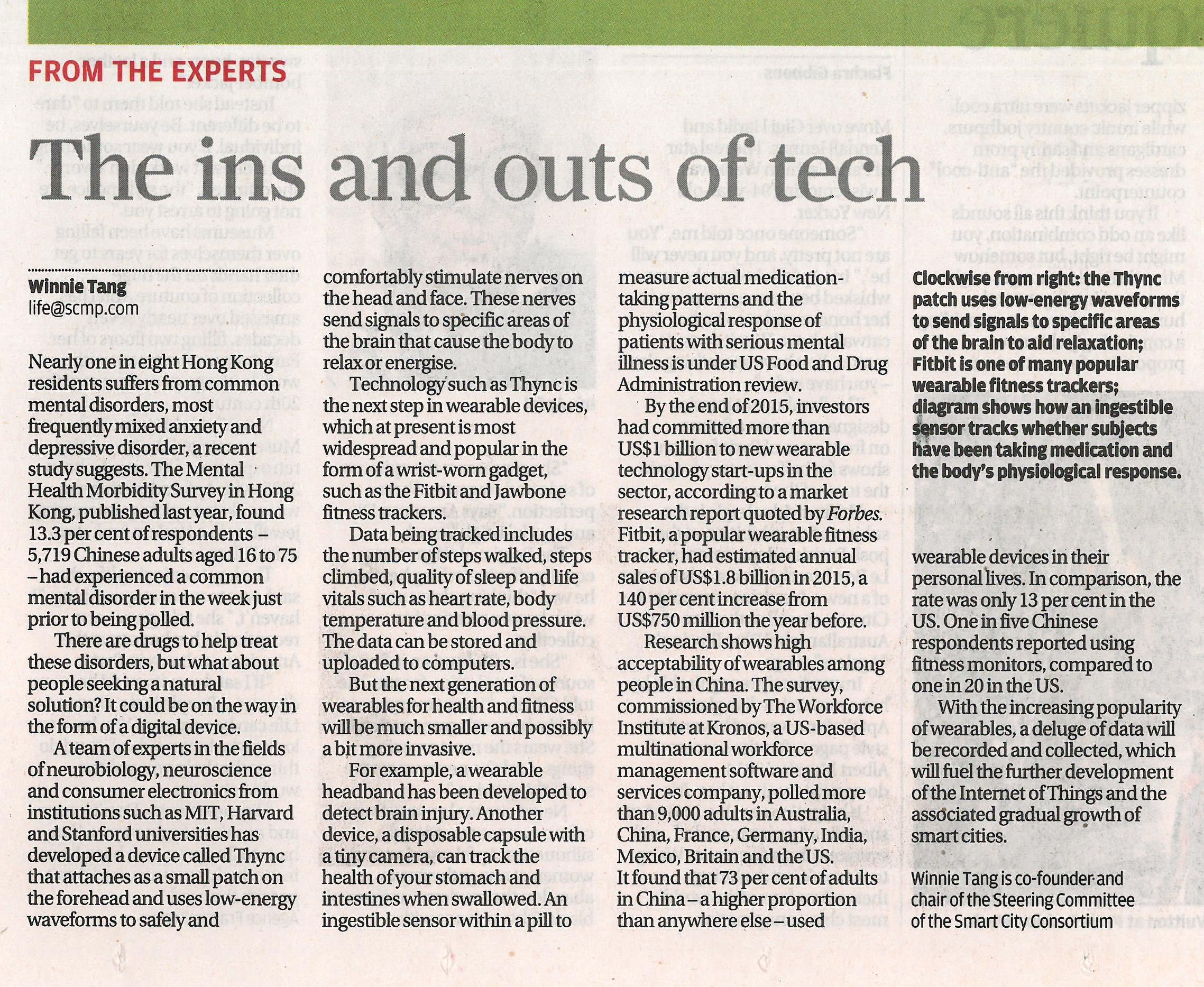網上版請按此

The ins and outs of tech
Nearly one in eight Hong Kong residents suffers from common mental disorders, most frequently mixed anxiety and depressive disorder, a recent study suggests. The Mental Health Morbidity Survey in Hong Kong, published last year, found 13.3 per cent of its respondents – 5,719 Chinese adults aged 16 to 75 – had experienced a common mental disorder in the week just prior to being polled.
There are drugs to help treat these disorders, but what about people seeking a natural solution? It could be on the way in the form of a digital device.
A team of experts in the fields of neurobiology, neuroscience and consumer electronics from institutions such as MIT, Harvard, and Stanford universities has developed a device called Thync that attaches as a small patch on the forehead and uses low-energy waveforms to safely and comfortably stimulate nerves on the head and face. These nerves send signals to specific areas of the brain that cause the body to relax or energise.
Technology such as Thync is the next step in wearable devices, which at present is most widespread and popular in the form of a wrist-worn gadget, such as the Fitbit and Jawbone fitness trackers.
Data being tracked includes the number of steps walked, steps climbed, quality of sleep and life vitals such as heart rate, body temperature and blood pressure. The data can be stored and uploaded to computers.
But the next generation of wearables for health and fitness will be much smaller and possibly a bit more invasive. For example, a wearable headband has been developed to detect brain injury. Another device, a disposable capsule with a tiny camera, can track the health of your stomach and intestines when swallowed. An ingestible sensor within a pill to measure actual medication-taking patterns and the physiological response of patients with serious mental illness is under US Food and Drug Administration review.
By the end of 2015, investors had committed more than US$1 billion to new wearable-technology start-ups in the sector, according to a market research report quoted by Forbes. Fitbit, a popular wearable fitness tracker, had estimated annual sales of US$1.8 billion in 2015, a 140 per cent increase from US$750 million the year before.
Research shows high acceptability of wearables among people in China. The survey, commissioned by The Workforce Institute at Kronos, a US-based multinational workforce management software and services company, polled more than 9,000 adults in Australia, China, France, Germany, India, Mexico, Britain and the US. It found that 73 per cent of adults in China – a higher proportion than anywhere else – used wearable devices in their personal lives. In comparison, the rate was only 13 per cent in the US. Some one in five Chinese respondents reported using fitness monitors, compared to one in 20 in the US. In other words, the China market takes up wearable products more readily.
With the increasing popularity of wearables, a deluge of data will be recorded and collected, which will fuel the further development of the Internet of Things and the associated gradual growth of smart cities.
Winnie Tang is co-founder and chairwoman of the Steering Committee of the Smart City Consortium